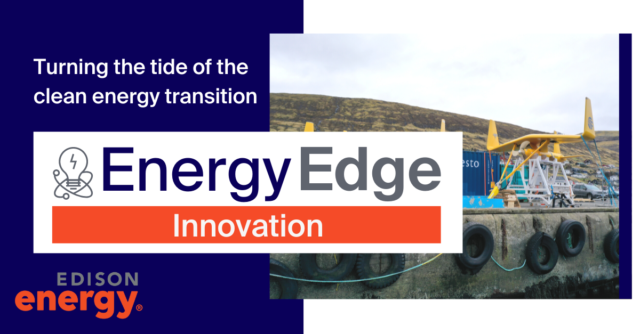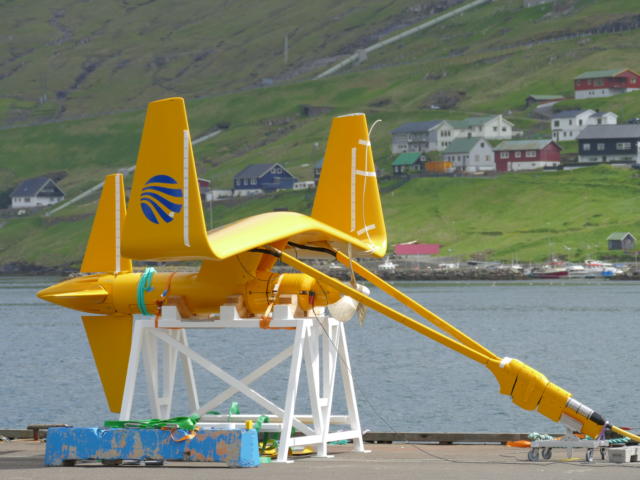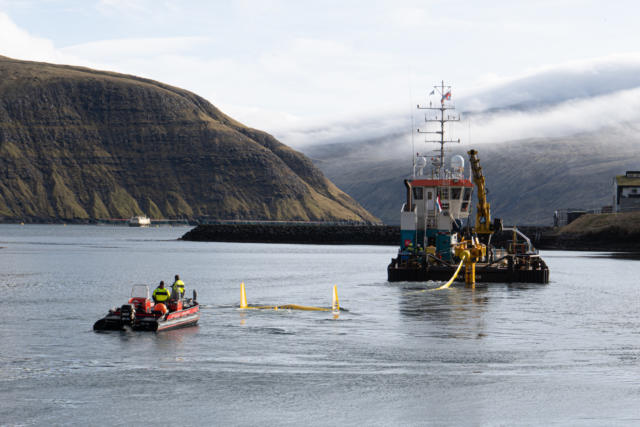
June 22, 2022
Turning the tide of the clean energy transition
By Elana Knopp, Senior Content Writer

Photo credit: Minesto
Innovation will be key to accelerating the clean energy transition and reaching a net zero economy. Edison Energy is following the latest innovations in decarbonization across technologies, projects, and programs, from conception through completion.
 The innovation
The innovation
Deep Green Island Mode (DGIM), a stand-alone tidal and ocean current energy converter for off-grid applications. It is based on the concept of flying an underwater kite, that when steered in an eight-shaped trajectory, generates a speed several times the speed of the actual current.

Photo credit: Minesto
 The big picture
The big picture
Tidal energy can be critical to balancing the seasonal variations and unpredictability of wind and solar. The DGIM project could help spur a new industry, adding predictable tidal energy to the global energy mix and leading the way for other island and coastal communities.
 The players
The players
Sweden-based marine energy technology developer Minesto and Faroe Islands-based utility company SEV
 How it works
How it works
In 2019, Minesto was awarded a €2.5 million grant from the European Commission’s SME Instrument Program to support the installation, commissioning, and operation of two grid-connected units of Minesto’s DG100 model, part of the company’s subsea kite technology called Deep Green. The aim of the DGIM project is to install Minesto’s first two commercially viable microgrid units in a production and customer environment.
In 2020, Minesto reached the milestone of delivering electricity to the Faroese grid from the DG100 tidal kite system in Vestmannasund. It was the first time a tidal kite has produced electricity to grid.
The collaboration is part of a long-term goal to add further tidal energy capacity via Minesto’s Deep Green technology to the Faroe Island’s energy mix.
Minesto has launched a detailed plan for large-scale buildout of tidal energy arrays in the Faroe Islands, an archipelago of 18 mountainous islands located halfway between Iceland and Scotland in the North Atlantic Ocean.
The plan will utilize tidal kite arrays, each with 20-40 MW of installed capacity, at four verified locations. In addition to Minesto’s existing grid-connected site in Vestmannasund, the company points to Hestfjord, Leirviksfjord, Skopunarfjord, and Svinoyarfjord as ideal array locations. The project would have a total capacity of 120 MW of tidal energy, generating an estimated 350 GWh per year.

Photo credit: Minesto
 Why it matters
Why it matters
The project would supply 40% of the nation’s growing electricity consumption, enabling the Faroe Islands to reach its goal of producing all of its electricity from renewable energy sources by 2030, including transport and heating.
As nations seek to secure clean, reliable, and independent energy systems, there is an increasing need for complementary components such as energy storage and predictable production of energy. The phased shift of tidal flows will provide valuable flexibility and a continuous supply of electricity into the grid.
 Next steps
Next steps
During 2022, the existing grid-connected site in Vestmannasund will be expanded, establishing a mini array with three systems at a total installed capacity of 1.4 MW.
The next step is a 10 MW array in Hestfjord, with direct electricity distribution to nearby capital Torshavn. Further buildout of Hestfjord will follow, as well as a phased buildout of Leirviksfjord, Skopunarfjord and Svinoyarfjord, making it possible to deliver a path to 100% renewable energy by 2030.
Stay tuned for the next installment of the Energy Edge Innovation Series!
Join Our Mailing List
Supply Chain Decarbonization: Your Guide is Here!
Download our new white paper on establishing a successful decarbonization program.
Read More



